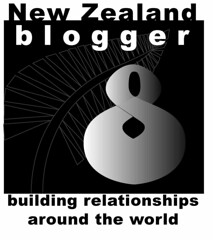 By Terri Byrne
By Terri ByrneIn 1987, the Auckland Ethnic Council founded a radio station that would:
- allow non-English communities to hear their languages, their news, music and literature that
- would represent their culture, values and beliefs, and
- would allow them to have a public presence in a land they had lived in for decades if not generations.
Today that station is 22 years old and the most diverse medium in the country. Planet FM has full schedules, broadcasting in 50 languages, all made by the language groups concerned. It is multicultural and cross-cultural. Radio represents 42 percent of the media day. It is portable, intimate, comparatively inexpensive to make and always free-to-air.

Sadly though, this public broadcasting service is not adequately funded. The major constraint on its content is the need for the programme makers to pay to air their material.
One of our hopes for 2020 or much sooner is that those with the least ability to pay are no longer the only ones who have to pay for media that’s relevant to them.
Currently the station is obliged to choose those who pay, rather than those with the best ideas or the most needed content.
However, they are often the same thing and the programmes are vigorously supported by their contributing communities, with research revealing figures between 60 and 80 percent of targeted communities listening to their shows.
Around today’s forum I hear a lot of references to “mainstream” media, which I believe is an increasingly dinosaur concept.
Already SKY brings 80+ channel options to 50 percent of NZ households, there are another seven free-to-air and two digital-only TV channels and a range of regional channels. A number of our broadcasters have satellite dishes to pull in own-language television.
There are 212 radio stations in NZ and Auckland, with 50+ radio stations has more than New York or London. The commercial stations run an array of brands over about 140 stations. The national public broadcaster is on frequencies throughout the country including for a select minority on Concert FM. There are 11 community access stations nationwide, as well as student radio stations and countless LPFM stations.
About 60 percent of NZ homes are web-connected, more than half are broadband connected. The online population of this country is equivalent to 85 percent of the population.
So the market – or the audience as I prefer to think of us – has splintered into dozens of niches.
Minority is Mainstream and in 2020 will be more so.
To quote Bob Geldof, a man who has led the way in many areas of media:
“The future belongs to those who build their own media.”
We’re delighted that Planet FM is ahead of the curve on all this.
• We recognise the hundreds of niche broadcasters and their listeners …
• We facilitate the making of their own media
• We do not exercise editorial control, ensuring freedom of cultural and social expression…
• We support local.
• And we ensure their productions are archived for on-demand, online listening 5 minutes after broadcast – along with a range of other multi-lingual information services for settlers.
It is our belief that in 2020 we’ll all be shopping for our media on multiple platforms and the content will often be of our own devising rather than from a schedule devised for advertisers
addressing matters deemed relevant by programmers with a narrow cultural focus.
Already music radio is an iPod, but informational, entertaining and community-enabling content is flourishing.
Already NZ is fabulously diverse and when what was once mainstream media catches up with that, it will:
• hand over the tools,
• Relax the editorial controls,
• Embrace the new aesthetic
• And discover the riches already being expressed in a thousand ways.
It will not be about “them” becoming like “us” or hopefully by 2020, it will not even be about “them” explaining themselves to “us”. Hopefully it will be about all of us discovering who we are becoming as a nation.
And we should not imagine that only non-English audiences are interested in so called “ethnic” content. Māori Television attracts between 50 and 70 percent non-Māoriviewers.
In discussing the aging of PBS’s demographic with Gareth Watkin, Leslie Rule at KQED in San Francisco says:
“It’s about changing the idea of what public broadcasting is. It’s now more about “broadcasting the public."
This will require funding policies that are about where we are headed, rather than where we’ve been. Policies that promote equity of access to services.
Government agencies with responsibilities to non-English populations will take a leaf from the efforts of our Pacific people and make it mandatory for information campaigns to be extended - so if cervical screening is best understood in Farsi or Russian it is aired that way, that Tamil and Arabic communities are alerted to social policies, that education projects are broadcast in Tagalog and Amharic.
In 1975, SBS Radio came into being as a three-month experimental service to explain Australia’s new healthcare system. Now, independent audience surveys of Australia’s largest language groups show that for the majority, SBS Radio is their primary source of information about government and community services.
The Australian government spends in excess of $20 million of Vote Broadcasting on non-English radio and more again in information campaigns.
The least we can do is add existing multilingual broadcasters to government agency advertising budgets.
Terri Byrne is broadcast manager of Planet FM, run by Access Community Radio Inc. It was an address delivered at the NZ On Air seminar on diversity - "Screen and Heard: NZ Broadcast Audiences in 2020" in Auckland on 4 June 2009.





















No comments:
Post a Comment